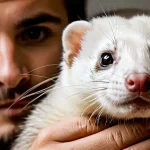Key Adaptation Mechanisms in Cats
Understanding how cats adjust to new surroundings
Cats exhibit a range of cat adaptation strategies that enable them to survive and thrive in shifting environments. Among the most noticeable are behavior changes such as altered hunting patterns, modified social interactions, and adjusted activity levels. For instance, UK cats often display increased nocturnal activity when urbanisation reduces daytime prey availability.
Additional reading : What Makes Cats Unique Compared to Other UK Animals?
Physiological adaptation also plays a crucial role. Cats can adjust their metabolism and body temperature regulation to cope with varying climates and food scarcity. This ability allows UK cats to maintain energy balance despite colder winters or limited resources in city settings.
These adaptations are especially relevant for UK cats facing frequent moves or urban sprawl. Changing habitats demand flexibility, and cats that can quickly modify behavior and physiology have a better chance of staying healthy and stress-free. Recognizing these mechanisms helps pet owners understand why their cats may behave differently after relocation or environmental stress.
Additional reading : Unraveling feline aggression: a guide to identifying and managing cat hostility towards humans and other animals
By appreciating the balance between behavior changes and physiological responses, we can support cats through transitions, ensuring they remain comfortable and well-adjusted in diverse UK environments.
Major Environmental Changes Impacting UK Cats
Understanding how urban development and climate shifts affect cats in the UK is vital for any cat owner. As cities expand, traditional rural habitats shrink, leading to a significant change in the cat environment UK. Urban areas bring challenges such as increased traffic, noise, and reduced green spaces, all of which can alter a cat’s daily behavior and stress levels.
UK cats must also cope with the country’s varied seasonal adaptation demands. The often unpredictable weather—from chilly, wet winters to unexpectedly hot summers—can influence a cat’s health. For instance, cats in urban spaces may struggle with limited shelter during cold spells, whereas rural cats face greater exposure to natural elements but more room to roam freely.
Moreover, climate change introduces new weather patterns that can disrupt a cat’s usual routines, such as altered breeding cycles or shifts in prey availability. Cats adapting to these fluctuations need owners to provide consistent support, like ensuring access to adequate shelter and a stable food supply. Recognizing the impact of these major environmental changes helps cat owners tailor care to maintain their pets’ wellbeing amid ongoing changes in the UK’s landscape.
Recognising Signs of Cat Stress and Successful Adaptation
Helping you understand your cat’s wellbeing in the UK
Cats express stress through various behavioural changes. Common cat stress signs include excessive grooming, hiding more than usual, reduced appetite, and increased vocalisation. These behaviours can be subtle, so observing your cat’s routine closely is essential for early detection. Noticing frequent scratching or sudden aggression are also important indicators to watch for.
Conversely, adaptation indicators show your cat is settling well into its environment. Positive signs include a normalized appetite, seeking interaction at usual intervals, relaxed body language such as slow blinking, and playful behaviour returning. A cat that explores its surroundings confidently and maintains a consistent sleeping pattern generally signals good cat wellbeing.
If stress signs persist beyond a few days or worsen, it’s advisable to seek expert advice. Veterinary professionals or animal welfare organisations in the UK can provide tailored support, especially if your cat shows signs of illness or injury complicating its adaptation. Early intervention enhances comfort and health, ensuring your cat’s successful adjustment and improved wellbeing.
Practical Strategies for Helping Cats Adjust in the UK
Helping cats adapt to new environments or changes is essential to their wellbeing. Whether you’re managing cat relocation or simply adjusting to seasonal shifts, thoughtful preparation makes a big difference.
Before a major change like moving house or introducing new pets, acclimate your cat gradually. Use familiar bedding, toys, and scents to provide comfort. This consistency aids in helping cats adapt by reducing anxiety associated with unfamiliar surroundings.
Environmental enrichment plays a crucial role in cat care tips UK residents should know well. Provide interactive toys, scratching posts, and perches. These not only stimulate your cat’s natural instincts but also create a sense of control and safety. In confined spaces, rotate toys regularly to maintain interest.
Seasonal changes affect cats too. In wetter, colder months common in the UK, ensure your cat’s resting spots are warm and dry. During summer, offer cool shaded areas and fresh water to prevent overheating. Adjust feeding schedules and grooming routines accordingly to support health throughout the year.
By combining these strategies—gradual introductions, enrichment, and seasonally aware care—you can greatly improve your cat’s comfort and happiness during transitions, making cat relocation or environmental changes smoother for both of you.
Expert Advice on Supporting Cat Adaptation in Changing UK Environments
Supporting a cat’s adaptation during environmental changes is crucial for its well-being. Veterinary advice emphasizes observing your cat closely for signs of stress, such as hiding, reduced appetite, or excessive grooming. Early recognition allows you to intervene promptly and provide comfort.
UK veterinarians recommend maintaining consistent routines to offer a sense of security amid change. This includes feeding times, play sessions, and sleep areas. Introducing new elements gradually—whether it’s moving to a new home or adapting to a different outdoor environment—helps cats adjust without overwhelming them.
Animal welfare UK organisations also highlight the importance of environmental enrichment. Adding climbing spaces, scratching posts, and hiding spots caters to a cat’s natural instincts. This reduces anxiety and promotes physical and mental health. Moreover, some recommend pheromone diffusers, which can create a calming atmosphere to ease transitions.
For cat owners, resources like local veterinary clinics, experienced behaviourists, and online support communities offer valuable cat adaptation guidance. Utilizing these allows owners to tailor strategies specifically for their cat’s needs. Combining professional veterinary advice with practical animal welfare UK insights ensures a comprehensive approach to supporting cats in evolving environments.



